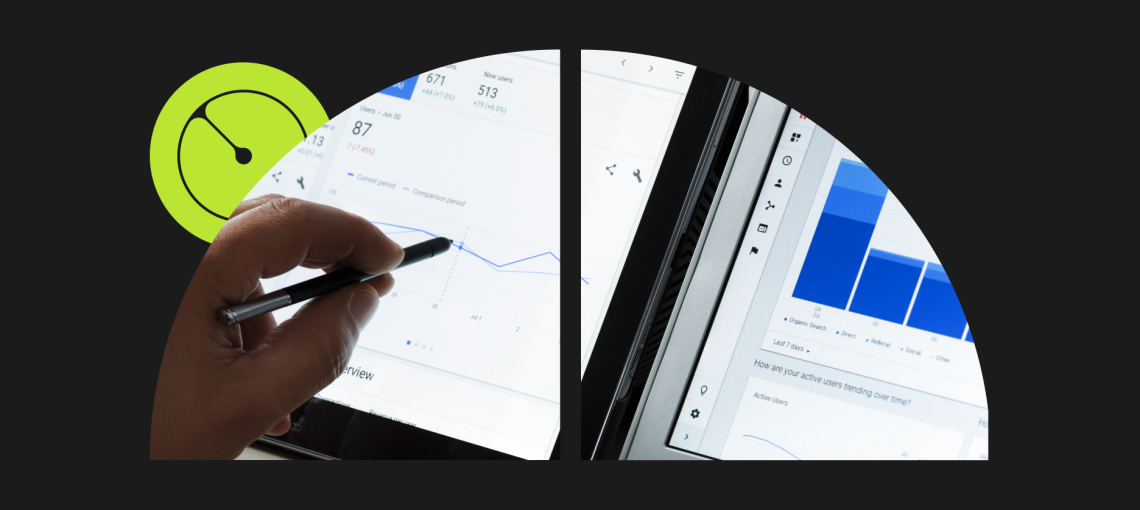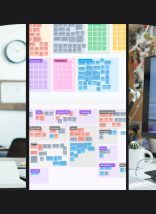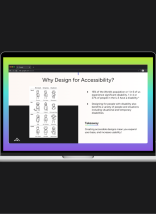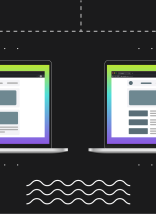Conversion Rate Optimization (CRO) has been an element of B2B digital strategy for years. But as more businesses rely on websites as a primary sales channel, bare minimum CRO strategies grow outdated. You’ll be left behind if you aren’t experimenting with CRO on a regular basis.
How did B2B businesses implement CRO in the past?
In the past, CRO usually meant A/B testing “as needed.” Tools like Hotjar or Crazyegg were the most common mechanisms to see how users behaved. You may have made small tweaks based on heat maps and recordings.
Platforms like Optimizely and Google Optimize were used as tools to test out new ideas or respond to perceived issues. For instance, maybe someone wanted to test using a new opening statement on the home page. Or maybe they realized people drop off on product pages so they tested some new layouts.
How is CRO changing for B2B companies now?
Frequency of tests increase.
Tools used for A/B testing and tracking site behavior are still relevant. However, the way companies are using them is changing.
According to Sitetuners.com:
“Businesses will need to shift to a longer-term perspective in their digital marketing and conversion rate optimization efforts in order to gain a sustainable competitive advantage. This means optimizing the entire business as opposed to tactical responses to issues that arise. Tactical optimization is useful but it can only do so much.”
Instead of reactionary, tactical testing; understand there is constant room for improvement and test every day. Make a minimum amount of tests required of marketing teams. After all, running 10 small tests is bound to provide more useful insights than 1 carefully researched test.
It’s also important to note that tests are only useful if results are compiled in a way that teams can easily draw insights. If not, it’s easy to repeat testing the same concept over and over instead of creating new hypotheses and moving forward.
AI amplifies opportunities.
The largest way we see AI impact CRO is with chatbots. In fact, Backlinko states that Chatbots saw a 92% increase in use in the past year, proving it to be the fastest growing communication channel. Roughly 41% of consumers claim to have used chatbots to assist with purchases, and 33% of consumers hope to be able to use a chatbot to make reservations online.
You may have also noticed that Machine Learning algorithms are built into search platforms, offering tailored recommendations for people searching. Additionally, real-time price adjustments may be applied to customers, maximizing the probability of a purchase.
Dynamic web pages make custom content easy.
There are many tools available to display dynamic content. This means that you can integrate software with your web platform that shows different versions of content based on a user’s behavior or data.
For instance, maybe your website is segmented by industries served. Someone who has viewed eCommerce content may be served with eCommerce resources. Someone who viewed eLearning content may be served with eLearning resources in the same content block.
Most Marketing Automation tools now offer dynamic content in both emails and web pages. Other site optimization tools, like Omniconvert and Optimizely, offer similar capabilities.
Page speed cannot be ignored.
User expectations for page speed are through the roof. A Google study found that 53% of mobile ad clicks immediately exited when load times exceeded 3 seconds. Furthermore, 47% of consumers expect a page to load in 2 seconds or less. A fast website is much more likely to hold users’ attention and convert.
Additionally, with Google core algorithm updates around the corner, it’s more important than ever to make load times a priority with your website. This update will include a factor called Page Experience, which heavily incorporates site speed into rankings.
Companies are investing in well-researched Information Architecture.
Information Architecture (IA) is the structural design of organizing information and its findability. For sites with large amounts of diverse content, a well-researched IA is critical to optimize conversions.
A popular IA question: should we group content by our personas, product and service lines, or industries?
The answer is – it depends. Building a successful site structure takes careful analysis of your business offerings and the tasks users wish to perform on your website.
Aside from organizing web pages into a clear structure, you’ll also have to organize data with clear labeling and categorization called taxonomies. Site search relies on taxonomies to serve users with information relevant to their queries. Your site search is only as useful as your taxonomies!
All in all, incorporating clear structure will help users navigate to needed information quickly, reduce frustration, and enhance search capabilities; in turn boosting conversions.
Looking for ways to enhance your B2B CRO strategy?
If you’re still doing the bare minimum with CRO, it can be difficult to choose the most effective newer methods to prioritize. Atlantic BT can help you build a roadmap and implement tools and best practices that will drive your business forward. If boosting site conversions is a primary goal, reach out for a free consultation to get started.










